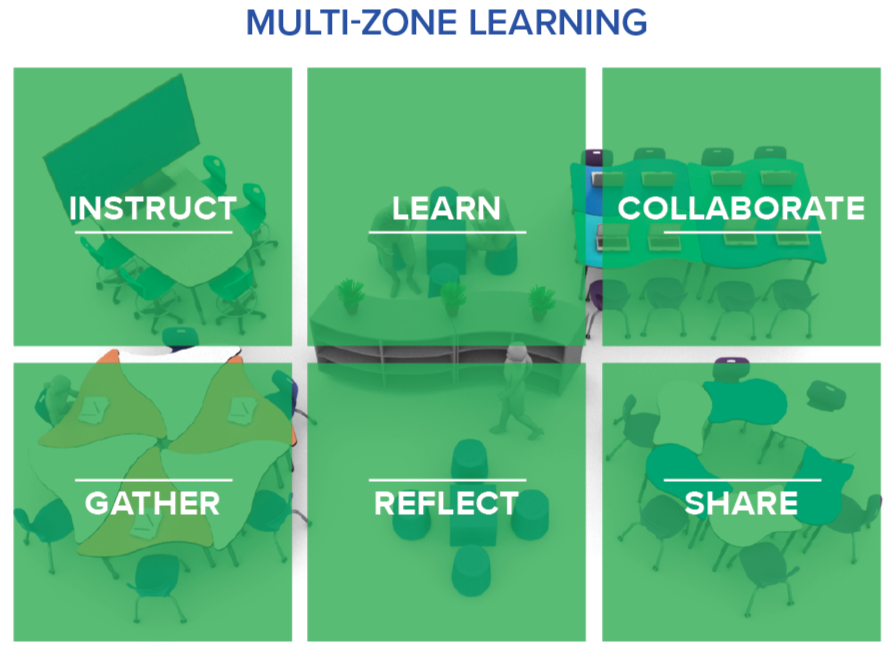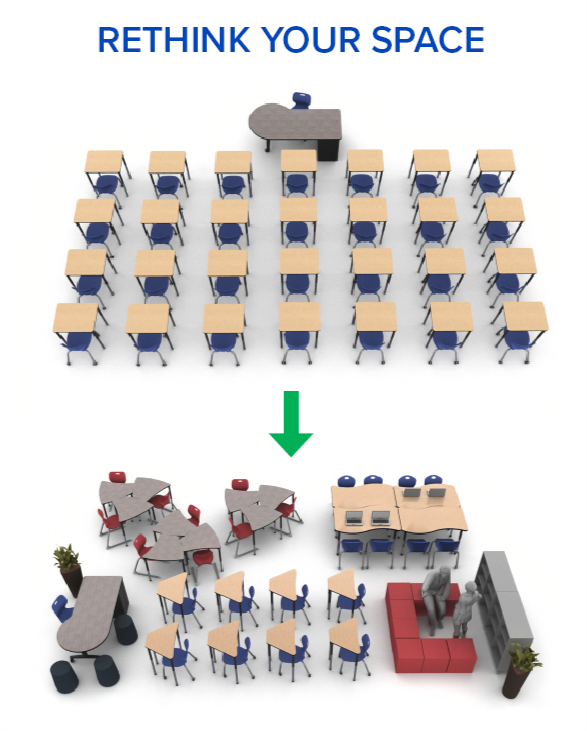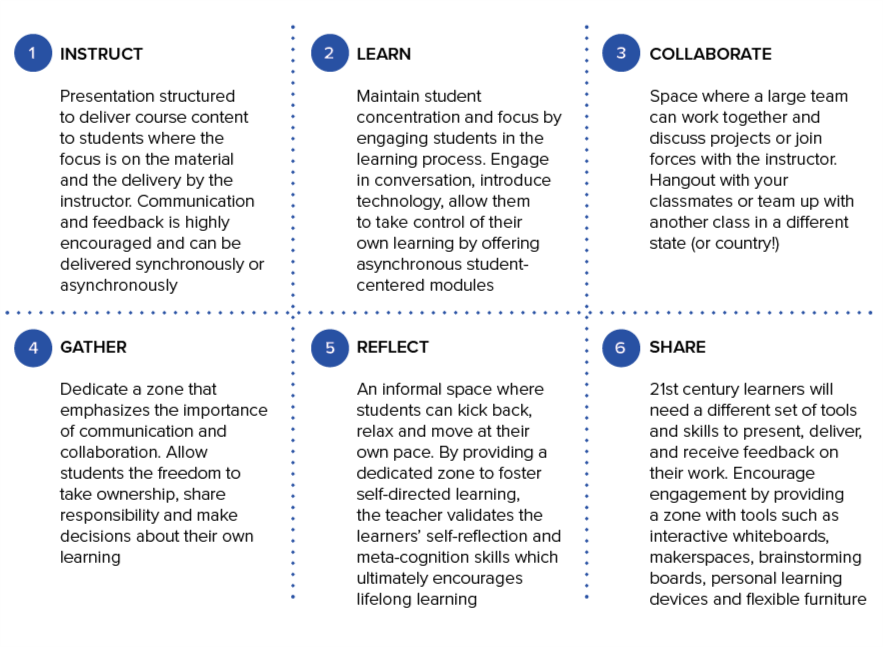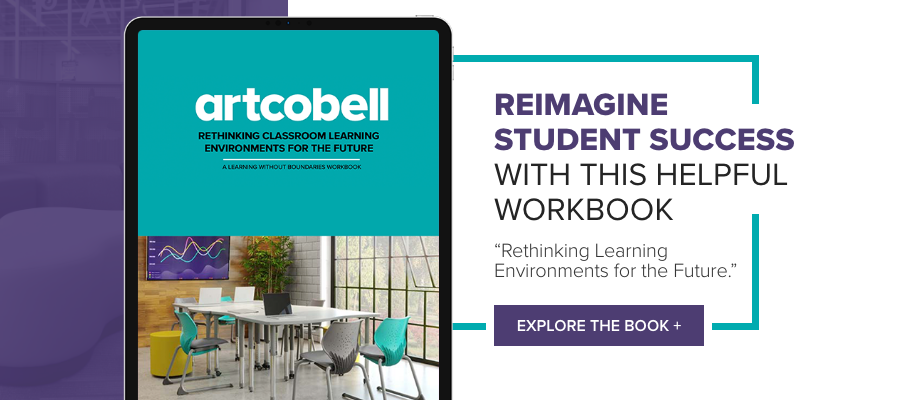It’s no secret that students in classrooms today learn differently than they did in the past. It has become more apparent the needs of the learner are becoming increasingly diverse, which makes the necessity of creating flexible learning environments even more critical.
As an educator yourself, you’ve likely been in an outdated classroom that wasn’t meeting your students’ needs and can testify to the need for change.
This is part of Artcobell's "Flexible Furniture" series.
- How Flexible Classroom Furniture Reinvents Learning
- Flexible Seating in Schools & Why It's Crucial for Classroom Setup
- The Living Classroom: Elements of a Flexible Learning Environment
- Connecting the Dots in the Classroom with Flexible Furniture
Current educational settings no longer meet the needs of the current students in the classroom, according to research Rosen (2010). Millennial minds have been wired differently through increased exposure to information and social media. This rewiring has given today’s learners a high level of choice and control over their daily interactions (Smith, 2011).
Students today have strong feelings and preferences about their physical and learning environments. They expect to experience comfortable, informal, environments that encourage socialization and active learning. (Kraus & Sears, 2008; Stanley & Dougherty, 2010).
Related Content: Promote Social Emotional Learning with Classroom Furniture & Setup
What’s a Living Classroom & How It Creates a Flexible Learning Environment
Enter the Living Classroom – a concept that breathes life into the environment by focusing on the physical, mental, and emotional aspects. Based on multi-zone learning spaces, it’s important that learning environments are flexible and can fit a diversity of student and teacher needs, along with various learning strategies.
Simply put, the Living Classroom is the model educators can use to enhance learning spaces to facilitate new and proven flexible learning environment techniques.

The Living Classroom is a concept born from the dynamic nature of teaching and learning. Technology, culture, and student learning styles continuously evolve. The Living Classroom theory is based on the idea that a classroom has multiple functions and the activities in the space keep changing based on the style of instruction and the participants involved. Transforming the classroom from the 19th century mechanical/industrial-age to the 21st century organic, Living Classroom age is an essential part of reinventing today’s learning strategies.

The Living Classroom acknowledges that each student learns a little differently and provides room for all types of learning. A single desk or table is the right size for individual study, partner projects, or for one-on-one tutoring sessions. When the team or project grows, desks and tables come together.
Take a look at these quick facts:
- Classrooms are born from the dynamic nature of learning
- Multiple functions based on style and participants are essential
- Every student requires the flexibility to learn differently
How to Transition Your Classroom into a Flexible Learning Environment
There are many elements to consider as you plan a transition into an active learning by creating a flexible learning environment. Reviewing critical pieces like educational standards, curriculum, instructional activities, and testing is standard, no matter what area of content.
However, it's also important to consider your classroom space and classroom setup. For example, you’ll need to make note of how student desks are arranged, where the bulletin boards are located, what technology is available, and how materials are organized around the classroom. You can bring these seemingly disconnected classroom setup components together using a system of learning zones.
The "instruct, learn, collaborate, gather, reflect, and share zones will help create safe space, a sense of community, freedom, and choice from the first through the last days of school.
Related Content: Explore Classroom Design Strategies that Promote Student Engagement

Professional Tips for Establishing a Flexible Learning Environment
Establishing a living classroom that promotes active learning, diversity, and is focused on maintaining a flexible learning environment can be challenging without the right resources. You may be wondering, "Where do I even begin?" If you need help getting started, contact Artcobell's Director of Learning Environments.
We'll work with you and your school to design and build learning spaces that positively impact your students!
Sources:
Bauman, W., Marchal, J. A., McLain, K., O’Connell, M., & Patterson, S. M. (2014). Teaching the millennial generation in the religious and theological studies classroom. Teaching Theology & Religion, 17(4), 301–322.
Kraus, S., & Sears, S. (2008). Teaching for the millennial generation: Student and teacher perceptions of community building and individual pedagogical techniques. The Journal of Effective Teaching, 8(2), 32–39.
Rosen, L. D. (2010). Rewired: Understanding the iGeneration and the way they learn. Macmillan.
Smith, K. T. (2011). Digital marketing strategies that Millennials find appealing, motivating, or just annoying. Journal From Learning Commons to Learning Communities 7 of Strategic Marketing, 19(6), 489–499. doi:10.1080/0965254X.2011.58138

